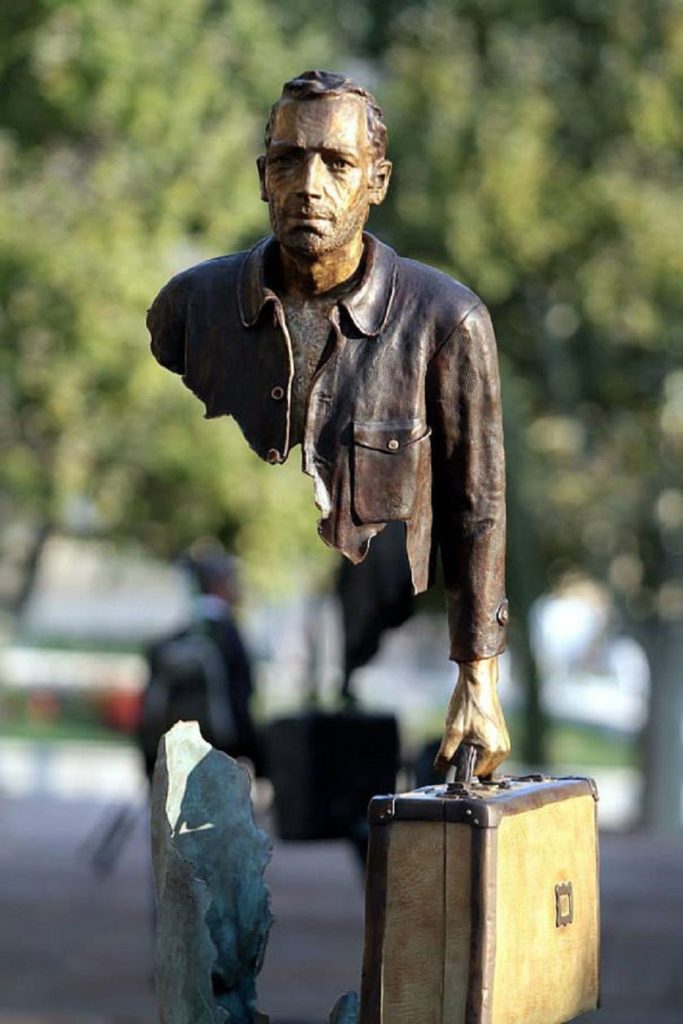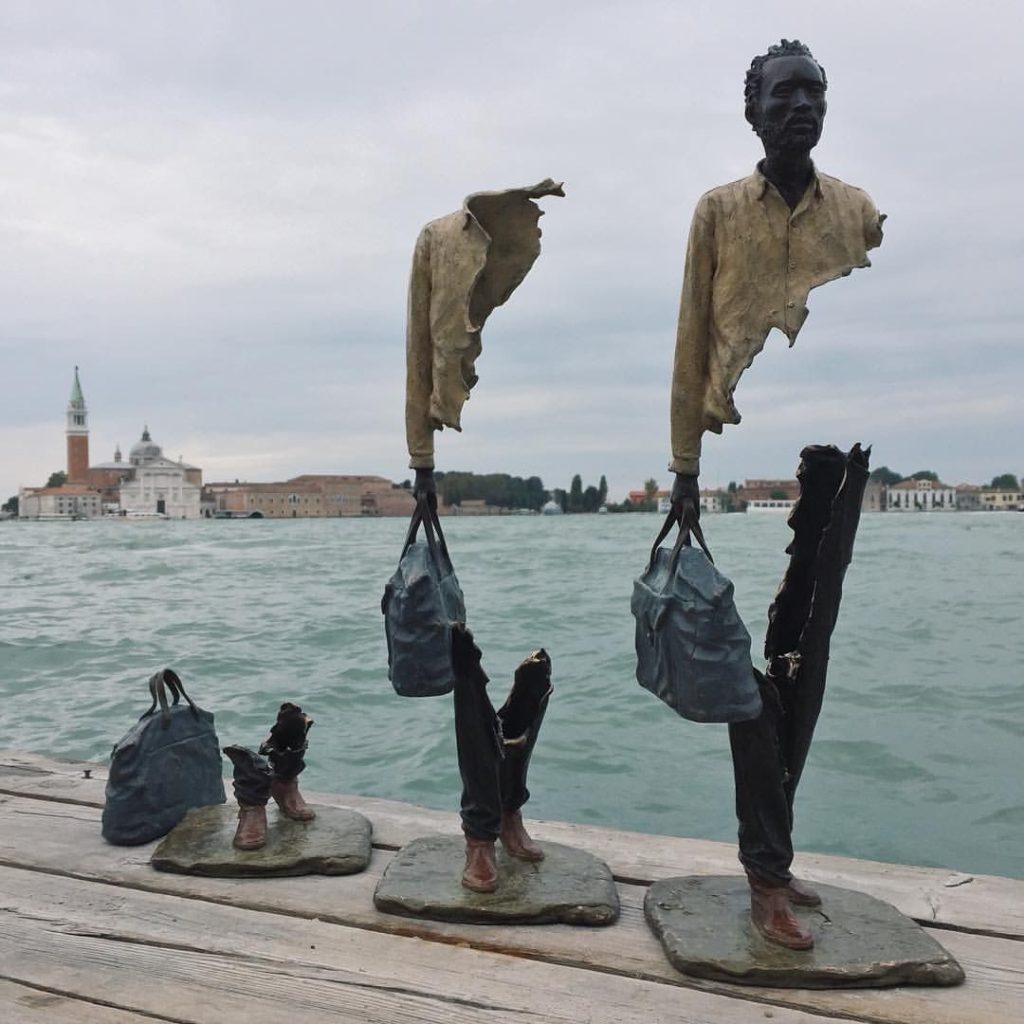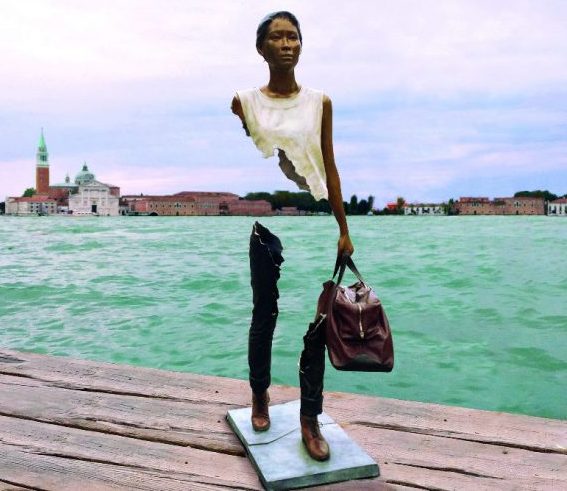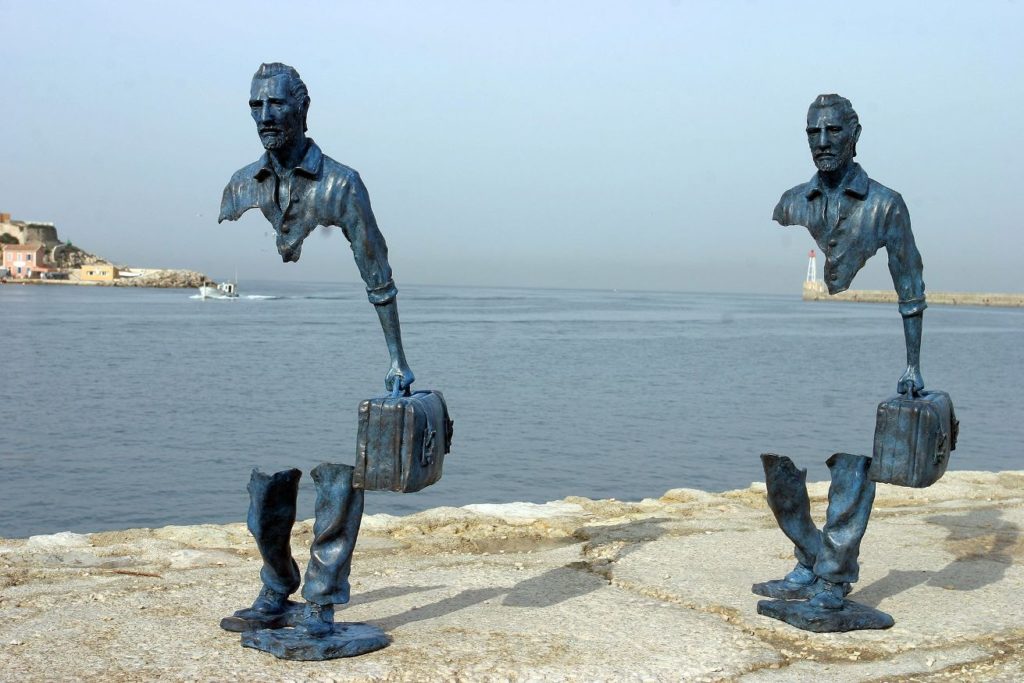Cupid and Psyche: Love Story Through Sculpture
Cupid and Psyche, mythological characters immortalized in Metamorphoses by Apuleius, have been inspiring artists through the centuries. Sculptors...
Valeria Kumekina 14 June 2024
Celebrating Marseille’s designation as the European Capital of Culture in 2013, Bruno Catalano crafted 10 life-size bronze sculptures installed along the waterfront. Named Les Voyageurs (The Travelers), these surreal sculptures portray individuals with substantial portions of their bodies mysteriously absent. Challenging the laws of gravity, the sculptures exhibit an otherworldly quality, juxtaposing the melancholic and existential themes that pervade the artist’s work.

Born in 1960 to a Sicilian family living in Morocco and raised in France, Catalano became a sailor in his twenties. This nomadic lifestyle was a major inspiration for his work as an artist. His sculptures, especially Les Voyageurs, are a good example of this. They delve into themes of travel, migration, and journey as a whole. Themes extend into exploring the ideas of home, belonging, loss, and the experiences of a “world citizen”. Each statue carries a single suitcase, weighing them down, but also serving as their only means of support.
Fascinating technically, artistically, and in their symbolism, the large omissions in the statues leave much to the imagination. Some figures appear to be fading away, while others materialize before our eyes. Contrary to the opinion that travel broadens and enriches, Catalano lamented that all his travels left him feeling that a part of him was gone and would never return.
The sculpture titled Fragments fully uses this ethereal effect with three sculptures broken down to create one unit. The man looks fragile and delicately held together, losing more and more of himself till only his feet and bag remain.

Vichinie is possibly a business traveler. She exemplifies the lost-in-thought, gazing into the distance look that so many of the sculptures possess.

The most recognizable and famous of the works is Le Grand Van Gogh, inspired by the world-weary painter.

These few examples of Bruno Catalano’s sculptures exhibit the skill of execution and gravity-defying fragility that prove to be incredibly powerful. The unique statues draw the audience in with the large amounts of negative space and expressive subjects. The audience is also easily able to project their own stories as well as examine their role as “world citizens”.
DailyArt Magazine needs your support. Every contribution, however big or small, is very valuable for our future. Thanks to it, we will be able to sustain and grow the Magazine. Thank you for your help!